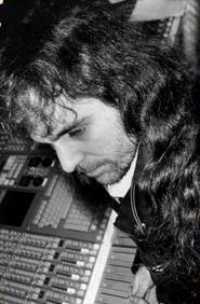Trans-Siberian Orchestra was formed in 1996 by Paul O'Neill who immediately approached long time friends and collaborators Robert Kinkel and Jon Oliva to form the core of the writing team.
While producing and writing for a number of years with various rock groups Paul was always looking for ways to make the music have greater and greater emotional impact. He tried to write the music that was so melodic it didn't need lyrics. And lyrics that were so poetic that they didn't need music but once you put the two of them together, the sum of the parts would be greater than the whole, and you couldn't imagine them apart. Once he'd done this, he was still looking for a way to take it to even greater heights and he realized that putting the songs within the context of a story would give it a third dimension that would make that additional emotional impact possible.
Hence, he started writing not just albums, but rock operas.
He realized then, that there was an inherent problem recording rock operas within the standard rock and roll band makeup. Rock operas by their nature need the voices to change as the characters change. Rock bands normally only have one (or if you're lucky) two great vocalists to work with, therefore limiting how far you can go. You're forced to make the music fit the band, as opposed to allowing the music to go wherever it needs to.
With Trans-Siberian Orchestra, first the music is created with no artificial limitations, and then we seek out within the classical, rock, Broadway and R & B worlds, the very best singers and musicians to bring each song to life. This also in many ways forces us to operate on a higher level. This environment has the additional benefit of causing a cross pollenization of musical ideas, creating hybrid forms of music that normally never would have occurred, such as an R&B singer doing a classical style melody and bringing gospel touches to it that causes it to glitter in ways that even the creators could not have predicted. Another very important aspect in the creation of the band, is that there could be no limits on the members; we mix all races and ages.
The young get to mine the experience of the old musicians, while they can't help to be inspired by the enthusiasm of people just entering the business. This has created a vast constantly changing musical group that even we do not know what it is going to do next.
Once when asked what Trans-Siberian Orchestra was about, Paul O'Neill replied, "It's about creating great art. When asked to define what great art was, Paul said, "The purpose of art is to create an emotional response in the person that is exposed to that art. And there are three categories of art; bad art, good art and great art. Bad art will elicit no emotional response in the person that is exposed to it, i.e.; a song you hear in an elevator and it does nothing to you, a picture on a wall that gives you the same emotional response as if the wall had been blank, a movie that chews up time. Good art will make you feel an emotion that you have felt before; you see a picture of a forest and you remember the last time you went fishing with your dad, you hear a song about love and you remember the last time you were in love. Great art will make you feel an emotion you have never felt before; seeing the pieta, the world famous sculpture by Michelangelo, can cause someone to feel the pain of losing a child even if they've never had one. And when you're trying for these emotions the easiest one to trigger is anger.
Anyone can do it. Go into the street, throw a rock at someone, you will make them angry. The emotions of love, empathy and laughter are much harder to trigger, but since they operate on a deeper level, they bring a much greater reward.
